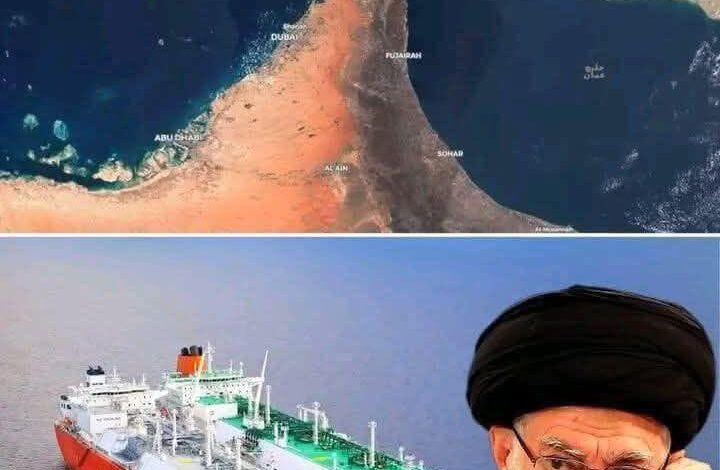
The Iranian Parliament has approved measures that could allow Tehran to shut down the Strait of Hormuz, one of the world’s most strategically vital waterways. At just 34 kilometers wide at its narrowest point, this maritime chokehold carries nearly 30 percent of global oil exports and roughly one-third of the world’s liquefied natural gas (LNG). Its closure would not simply disrupt trade—it could trigger a shockwave across the global economy.
Iran’s move comes in the wake of escalating tensions with the United States, which recently carried out strikes against Iranian nuclear facilities. In response, Tehran is weighing its most potent card: threatening the flow of energy through a corridor that powers much of the modern world.
Why the Strait of Hormuz Matters
The Strait of Hormuz links the oil-rich Persian Gulf with the Gulf of Oman and the Arabian Sea. On average, more than 20 million barrels of crude oil pass through the strait each day. This includes exports from Saudi Arabia, Iraq, Kuwait, the United Arab Emirates, and of course, Iran itself. In addition to crude oil, vast quantities of LNG from Qatar—the world’s largest LNG exporter—flow through the passage en route to Asia and Europe.
If Iran were to follow through on its threat, tankers would be forced to reroute thousands of miles around Africa’s Cape of Good Hope, adding enormous costs and delays. Insurance premiums on shipments would soar, and the sheer loss of supply would send global oil benchmarks—Brent and West Texas Intermediate—into uncharted territory.
The Immediate Economic Impact
For India, which imports more than 85 percent of its crude oil, the effects would be immediate and severe. Petrol and diesel prices would rise sharply, rippling across the economy. Air travel would become more expensive as airlines absorbed higher fuel costs. Electricity bills could increase as gas-fired plants scrambled to secure more costly LNG supplies. Ordinary households would feel the crunch in the form of inflation, from food prices to transportation costs.
Globally, a prolonged closure of the Strait of Hormuz could push oil prices well above $150 per barrel, some analysts warn. This would revive memories of the 1973 oil shock, which plunged much of the world into recession. Stock markets would wobble, supply chains already strained by geopolitical conflicts would face further disruption, and energy-importing nations would scramble to negotiate emergency supplies.
Strategic Dimensions: The U.S., China, and Beyond
For Washington, Iran’s threat is a direct challenge. The U.S. Fifth Fleet, headquartered in Bahrain, has long maintained a presence in the region precisely to safeguard shipping lanes. American officials have repeatedly declared that the free flow of commerce through Hormuz is a “vital national interest.” Any Iranian attempt to blockade the strait would almost certainly trigger a military response, raising the risk of a wider conflict in the Middle East.
China, the world’s largest oil importer, is watching closely. Beijing’s dependence on Gulf oil makes it especially vulnerable to disruptions. While China has strategic reserves and has invested heavily in overland pipelines through Central Asia and Russia, those supplies cannot replace the sheer volume that moves through Hormuz. Expect Beijing to step up diplomatic efforts, possibly urging restraint on both Washington and Tehran to avoid a crisis that could derail the global economy.
India’s Options
India faces a particularly tough balancing act. On one hand, it has historically enjoyed strong energy ties with Iran, once one of its major suppliers before U.S. sanctions curtailed imports. On the other, New Delhi maintains a strategic partnership with Washington and increasingly sees itself aligned with the West in countering China’s rise. If the Strait of Hormuz were closed, India would need to diversify supplies quickly, tapping into reserves from Russia, the U.S., and African producers. But logistical constraints and global competition for limited supply would make this a costly exercise.
India has built strategic oil reserves—enough for about 10 days of consumption—but this buffer is limited. Policymakers would likely turn to rationing measures and subsidies to shield consumers, though these come with fiscal burdens. In the longer run, the crisis may accelerate India’s push toward renewable energy and domestic production, but such transitions cannot happen overnight.
The Larger Geopolitical Stakes
Beyond economics, the threat highlights the fragility of global energy security. For decades, the Strait of Hormuz has been described as the “jugular vein of the world economy.” Each time tensions flare—whether during the Iran-Iraq War of the 1980s, the U.S.-Iran confrontations of the 2000s, or now in 2025—the world is reminded of just how much hinges on a narrow stretch of water.
Iran’s strategy is clear: leverage its geographic position to counter U.S. pressure and remind adversaries that it holds a card capable of destabilizing markets worldwide. For the international community, the challenge is finding a way to de-escalate tensions while ensuring that the global flow of energy remains uninterrupted.
What Comes Next
Diplomatic efforts are already underway, with European powers urging calm and Gulf states increasing surveillance in their waters. Oil-producing nations such as Saudi Arabia and the UAE are exploring alternate pipelines that bypass Hormuz, but these can only handle a fraction of total exports. The world remains on edge, knowing that any misstep in the Gulf could ignite a broader crisis.
For ordinary people—from New Delhi to New York—the Strait of Hormuz may seem distant, but its closure would be felt at every gas pump, in every plane ticket, and in every grocery bill. A 33-kilometer-wide waterway may be small on the map, but it looms large over the fate of the global economy.